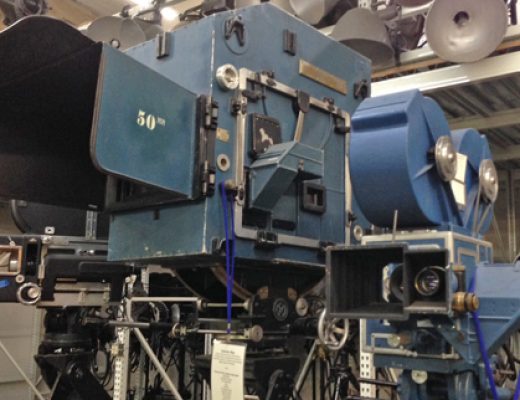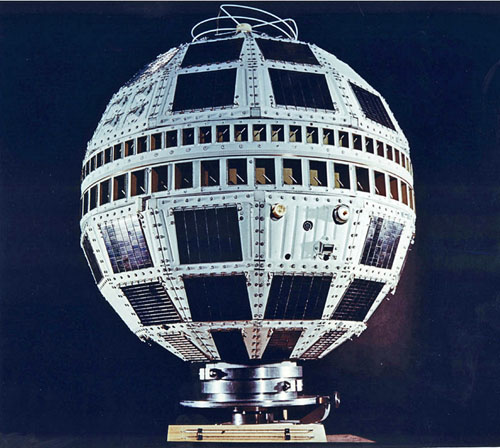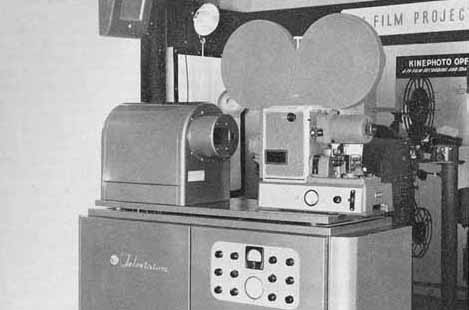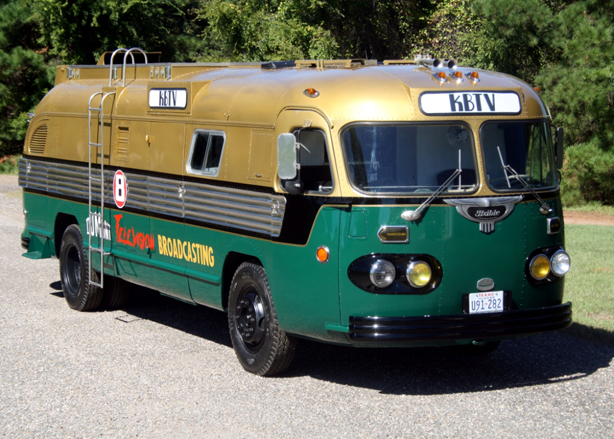Have you ever watched a movie or a television program set in a time decades ago that had a scene take place in television studio and wonder where did they come up with all that old equipment? And, in many cases, it appears to actually be working!
Well, here’s a fun fact. There’s a place in Los Angeles that specializes in providing obsolete technology to motion picture and television productions. They even provide research services to be certain the equipment they provide is historically accurate and time appropriate for the production’s time period and location.
Chances are that show you were watching was serviced by History For Hire, a prop house in Los Angeles run by the husband and wife team of Jim and Pam Elyea. While technology is their forte, it certainly isn’t their exclusive product. Go to any prop house and you’ll feel like you’ve stumbled into your crazy old great aunt and uncle’s basement – the ones your parents whispered about when they thought you weren’t listening – the ones who never threw anything away. You know – hoarders.
In fact, when I met Jim Elyea recently at his 32,000 sq. ft. facility, I asked him if he has ever been asked about being a hoarder. Without hesitation he replied, “If I hadn’t turned pro, I’d be a hoarder.” Obviously, I was not the first to ask.
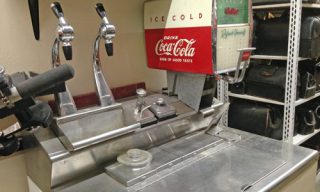 Need a 1950’s soda fountain? No problem. HFH has it. How about all the accessories to outfit a soldier about to parachute in behind enemy lines? No problem. Need to outfit the Beachboys with their guitars and amplifiers? No problem. Jim wants his clients (prop masters and set decorators) to be confident that the hardest thing on their list will become the easiest when they walk through his door.
Need a 1950’s soda fountain? No problem. HFH has it. How about all the accessories to outfit a soldier about to parachute in behind enemy lines? No problem. Need to outfit the Beachboys with their guitars and amplifiers? No problem. Jim wants his clients (prop masters and set decorators) to be confident that the hardest thing on their list will become the easiest when they walk through his door.
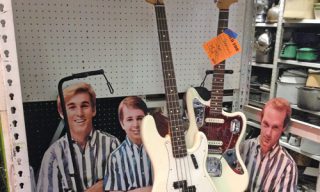 In case you don’t know, props is short for properties. Jim was able to clearly explain how the props department is distinguished from other departments on a film or television production. “Imagine you’re doing a scene at a haberdashery. The suit the actor is trying on is wardrobe. The suit draped over an assistant’s arm is a prop. The suits on display on the wall behind them is set decoration.”
In case you don’t know, props is short for properties. Jim was able to clearly explain how the props department is distinguished from other departments on a film or television production. “Imagine you’re doing a scene at a haberdashery. The suit the actor is trying on is wardrobe. The suit draped over an assistant’s arm is a prop. The suits on display on the wall behind them is set decoration.”
Most props are on a set to make the room look “lived in.” But some of them are called upon to actually work. Lamps are a good example. An actor comes into a dark room, goes to a lamp on the table and switches it on. If the lamp actually lights up, it is called a “practical.” A television camera actually producing live pictures is another example of a practical prop.
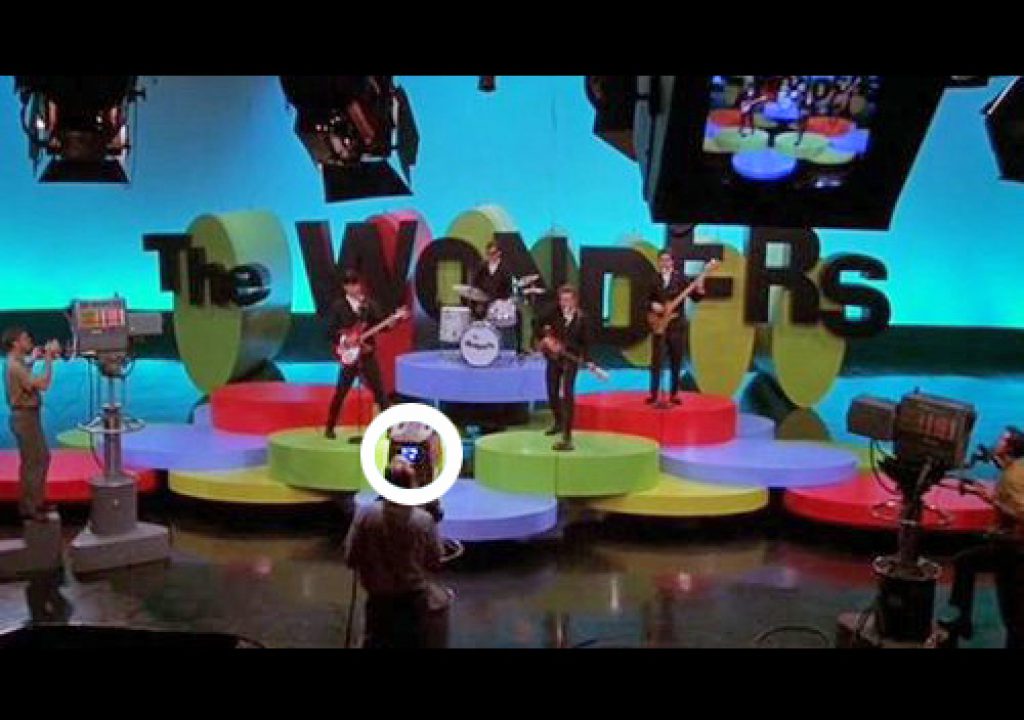
Jim began History For Hire in 1985 out of his apartment and quickly was called upon to ship 85 cartons of military gear to the Philippines for Oliver Stone’s “Platoon.” Soon after everything shipped, Jim’s wife, Pam, announced, “When that stuff comes back, it’s not coming here.” That proclamation resulted in Jim and his brother, Bob, opening their first facility. In 1993, Pam joined them and in 1994 they moved into their current facility as the company continued to grow.
https://youtu.be/Gd_AD8gNrUY
But back to those old television cameras. Why the fascination with technology, TV cameras in particular? Jim replies, “Television cameras were something we just thought were cool. So we got some television cameras.”
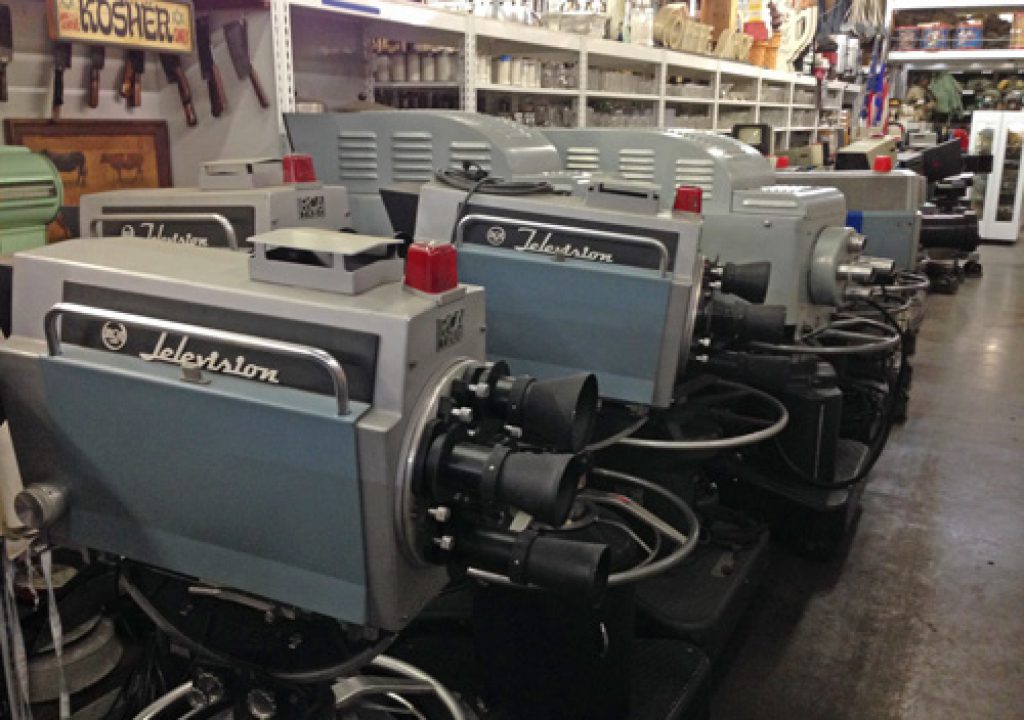
Did they ever! I was up to 25 when I lost count. Jim says it’s more like 50 ready to roll out the door. And that’s only the studio cameras, mostly on pedestals. That doesn’t count the wall of ENG handhelds he has.
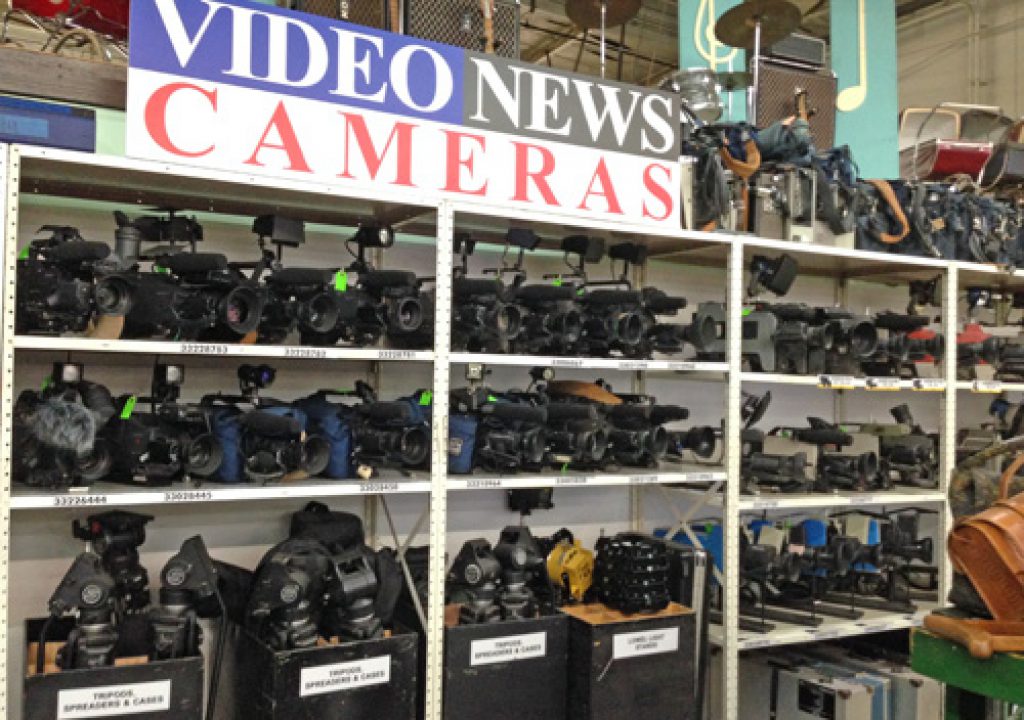
So what about those cameras in a film that appear to be working? Are they real? I learned that Jim takes great pride in saying, “Fooled ya – Prop house!” He explains, “In our business, if you have to ask if it’s real or not, we’ve done our job.” The fact is, many of his cameras have never known an Image Orthicon tube or any tube for that matter. They first came to life as a prop but are so well done, Jim says, “I have to open the side to check which is which.”
And even the cameras that did see service in a television studio somewhere have been gutted. One reason is weight. Jim must get his props to the location where the movie is shooting. They’ve shipped props to every continent including Antarctica. So he’s pretty adept at packing and shipping. Why ship electronics that don’t work? So they take the electronics out and make them available to collectors.
The other reason to clear out the insides is to make room for some modern technology. That’s the “Fooled ya” part. “What we have is new technology inside an old technology shell. You can’t depend on a 1950’s Orthicon camera working. You can’t have a video engineer on set with you with his full parts kit.” To illustrate, Jim points to another technology he makes available – teletype equipment. “We’ll spend a week solid getting a teletype working. In the drive across town, it shakes itself enough it needs to be serviced again on the set. So when we send teletype equipment out, we have to send a technician with it.”
But with his television cameras, the old technology is no longer an issue. With guidance from Chuck Pharis, a television engineer with a collection of vintage television equipment of his own (Chuck was featured in a previous PVC article), Jim and his crew were able to put a lightweight “lipstick” camera at the front of the camera and a little flat screen monitor in place where the viewfinder used to be. Thus, the production camera could shoot the prop camera from the cameraperson’s point of view and what showed on the camera’s viewfinder would be the same performance occurring in front of the camera.
“But we wanted to up the ante,” Jim added, “So we thought… how can we make the turret work and turn easily and how can we make it change lenses so we see it rack over to a new lens?”
“Marrying any sort of new camera to those old lenses… there’s too many ways that could go horribly wrong. So we did something clever.” He bought more little lipstick cameras and put different lenses on them to mimic the four original lenses on the camera and mounted them inside a unobtrusive little box they put under the front of the camera. When the turret moves, it changes the image on the viewfinder to a different tiny camera at the front, each one with a different focal length. In the movie “The Aviator,” there’s a Senate hearing scene where you can see it used.
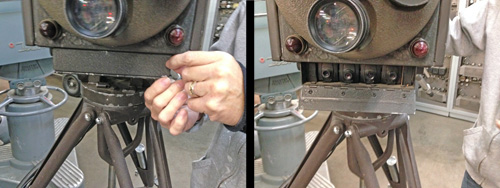
Jim also told me about a situation he had for “Grease Live” where the client wanted to use one of HFH’s prop cameras in a scene but also be able shoot the scene from the prop camera’s point of view at the same time. The resulting images from the two production cameras could then be intercut.
To do this, a sled was mounted in one of the HFH prop cameras to accommodate the client’s real camera. But there was a problem. They couldn’t have a modern lens protruding out of this 1950’s era camera. Jim’s staff went to work on the research and found that zoom lenses were just coming on the market within the time period the show was set. One of them was the Walker Electra Zoom. The HFH shop went to work and manufactured an Electra Zoom casing that surrounded the client’s lens perfectly. The shot became possible and was visually able to remain historically accurate.
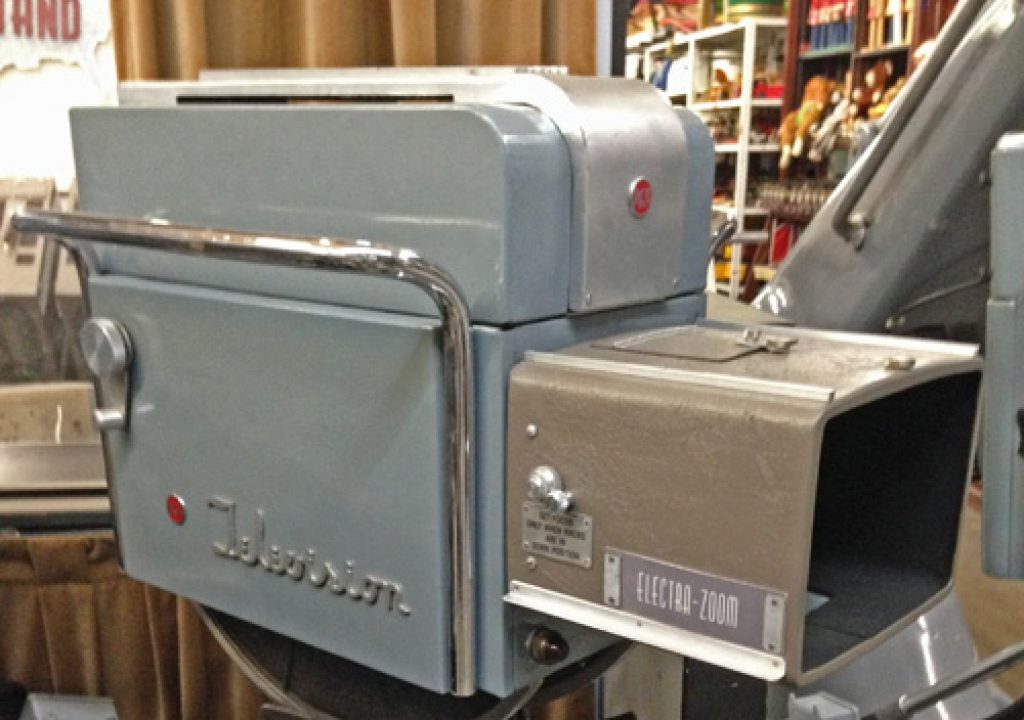
Cameras turned out to be just the tip of the iceberg (by the way, HFH also provided services to “Titanic”). Cameras require support equipment like pan/tilt heads, pedestals, dollies, tripods cranes and microphones. Jim has them from every television era right up to the present. And he can’t just send the client one camera. In just about every television studio there are 3-4 cameras. So Jim must have multiple, identical camera heads attached to the top of time appropriate support equipment for every television studio scene.
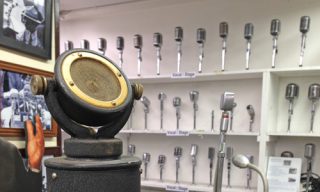 Among microphones, Jim estimates they have over 600 dating all the way back to the beginning of sound transmission and recording. And he has newsreel and television newsfilm cameras, too.
Among microphones, Jim estimates they have over 600 dating all the way back to the beginning of sound transmission and recording. And he has newsreel and television newsfilm cameras, too.
His most recent additions came all the way from Singapore. When a television station there replaced their Vinton Fulmar pedestals, a station employee thought they were “too cool” be relegated to the junkyard and took them home. Another collector featured in a previous PVC article, Bobby Ellerbee, helped Jim acquire his latest addition and the peds now have a new home in Hollywood.
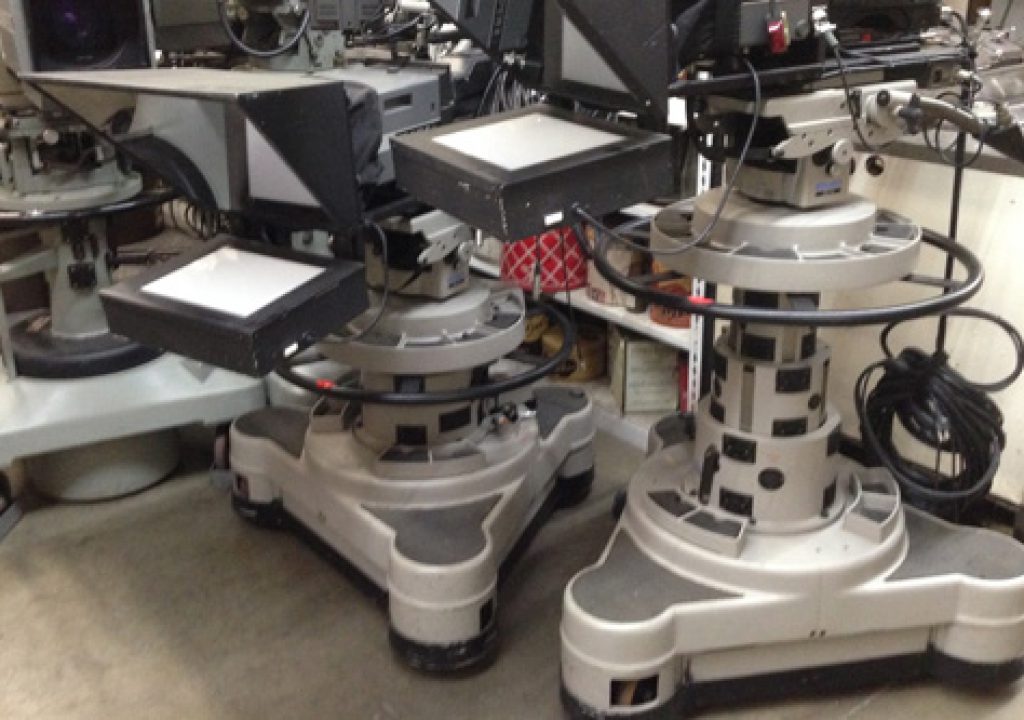
Television studios also must have items like Teleprompters, headsets, microphone booms, video switchers, audio consoles and video monitors. Jim has them.
But every once in a while, there is a need for stuff that isn’t in stock or no longer exists. For those instances, HFH has it own custom shop. “I love my shop.” Jim said. They seem to be able to build just about anything when provided with the right photographic evidence.
For the movie “Good Night and Good Luck,” a film about Edward R. Murrow and the McCarthy hearings, HFH provided all the television equipment including a CBS control room with a full director’s console.
“This is something we built completely from scratch,” Jim said, “We had the mics. We had these mounts. We got another piece from the local CBS affiliate. And we built the switcher for it.” He goes on to add that all the Camera Control Units have modern LCD screens in them but when it came to the oscilloscopes they didn’t want to get locked into what would be a complicated and unreliable technology.
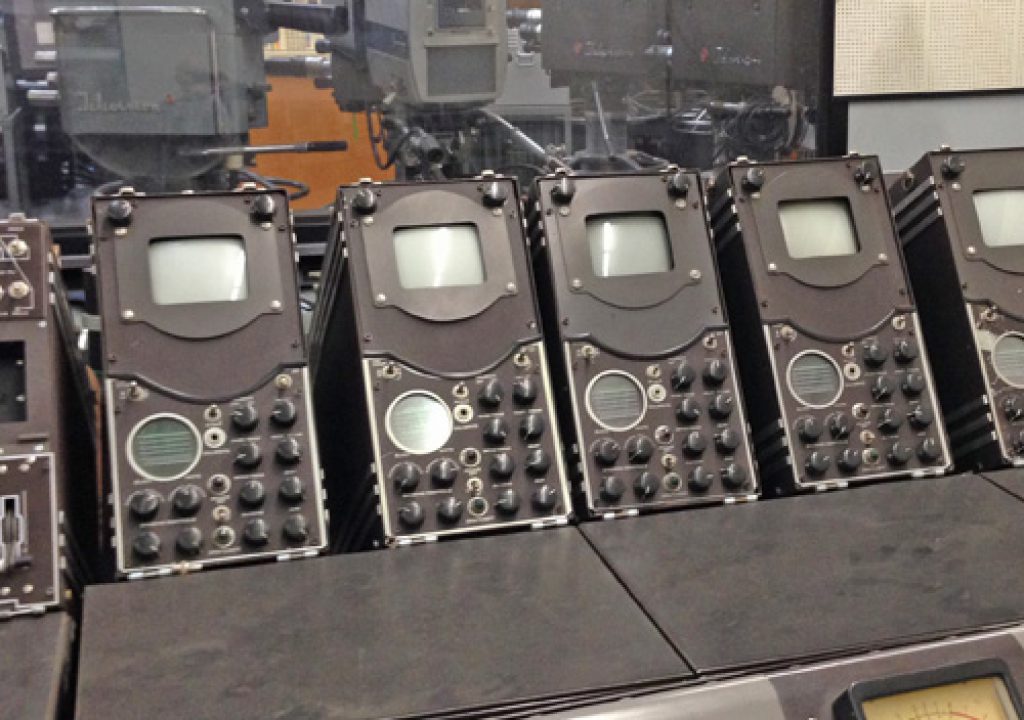
So the HFH shop came up with a still image of an oscilloscope screen that lights up, contains a little vibrator that moves it and interrupts the signal so it flickers to give the impression it’s changing. “And since we’re in the early 50’s, we have an early 50’s on air receiver,” Jim said motioning to the 50’s era TV set off to one side. I inspected it and found it goes from channel 2 to 13 only, exactly as actual receivers of the time operated in those days before UHF.
https://www.youtube.com/watch?v=WhUU4XGOETM
Jim is a stickler for everything he provides being historically accurate. For instance, in a film or television show based in a time when only flintlocks (guns that fired one shot then had to be reloaded) were available, the hero can’t show up with a Colt .45 six shooter (unless, of course, it is a time travel sci-fi story). Or more to the point of this article, if a film is set in 1946, you can’t use an RCA TK-41 color camera – they didn’t exist yet.
Within the HFH facility is a room called the Research Library. There are vintage magazines (the ones with lots of pictures like Life and Look), textbooks, technical manuals and books on specific shows. Along the end caps of the library shelves is a very well preserved collection of all the Sears and Montgomery Ward catalogs from the 20th century. And there is a whole section devoted to broadcasting.
But sometimes even when it seems like being accurate will be easy, it isn’t. The client always has the final say. Jim told one story about a show they were working about a morning show anchor. The client was looking for the same model television cameras used on the early days of the morning show. Luckily, the program had been amply photographed behind the scenes from the beginning so a lot of reference material was available. When the client came to look at the equipment, Jim proudly held up a book with the anchorperson on the set with the vintage television camera to one side. Jim said, “here it is, here’s the picture, here’s what we have, it’s identical, there you go.” The client responded, “What else you got?”
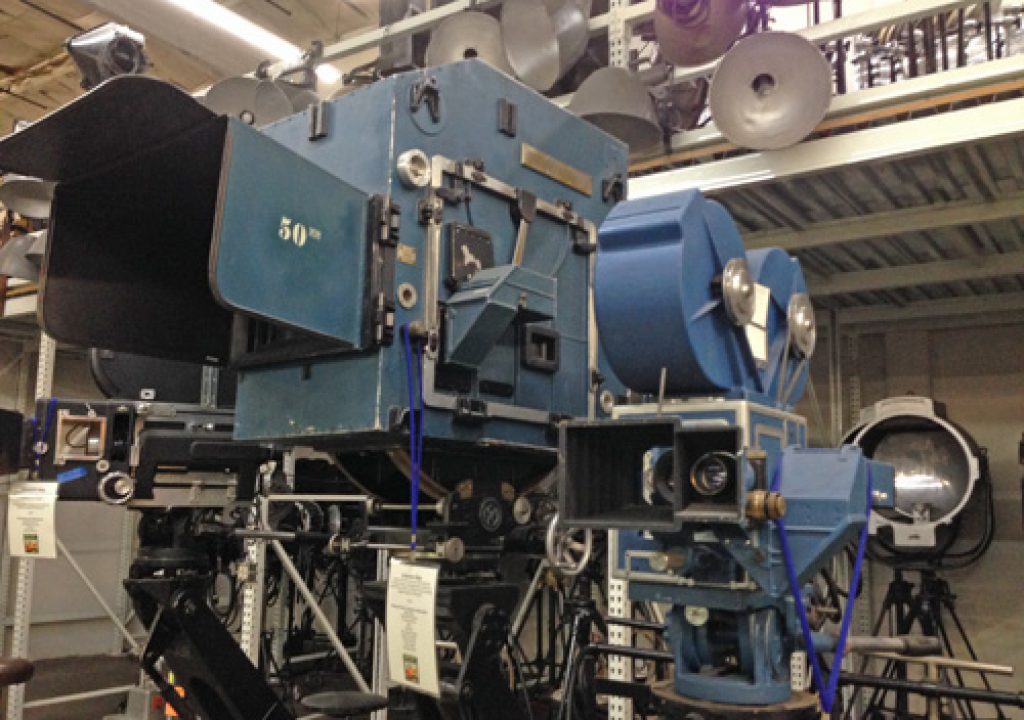
History For Hire’s devotion to historical accuracy came from a conversation they had with one of their clients. While they were preparing the “Chaplin” movie, the director of the film, Sir Richard Attenborough, told Jim and Pam “people learn their history from the movies so it’s important to get it right.” It’s been the company’s philosophy ever since.
From what I saw, history would appear to be in very good hands.

Filmtools
Filmmakers go-to destination for pre-production, production & post production equipment!
Shop Now








